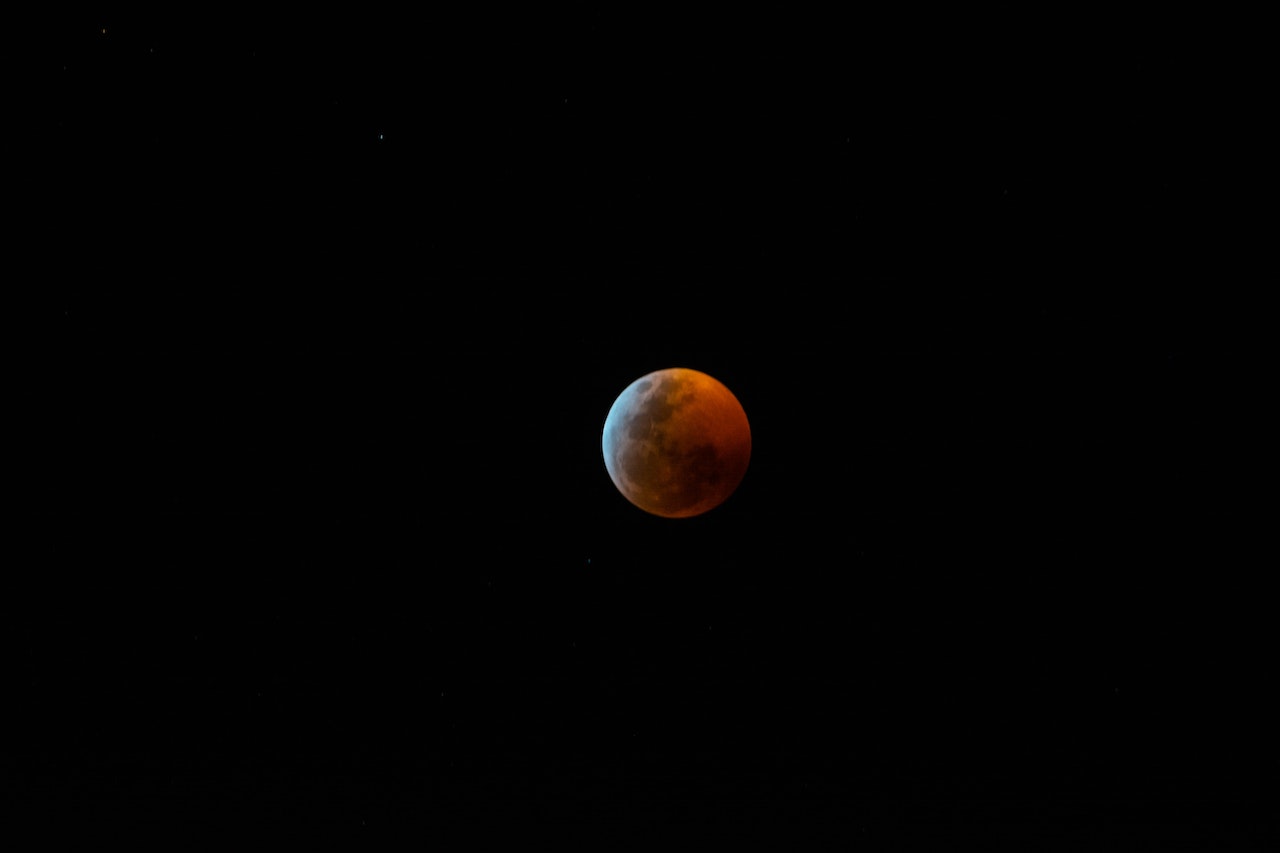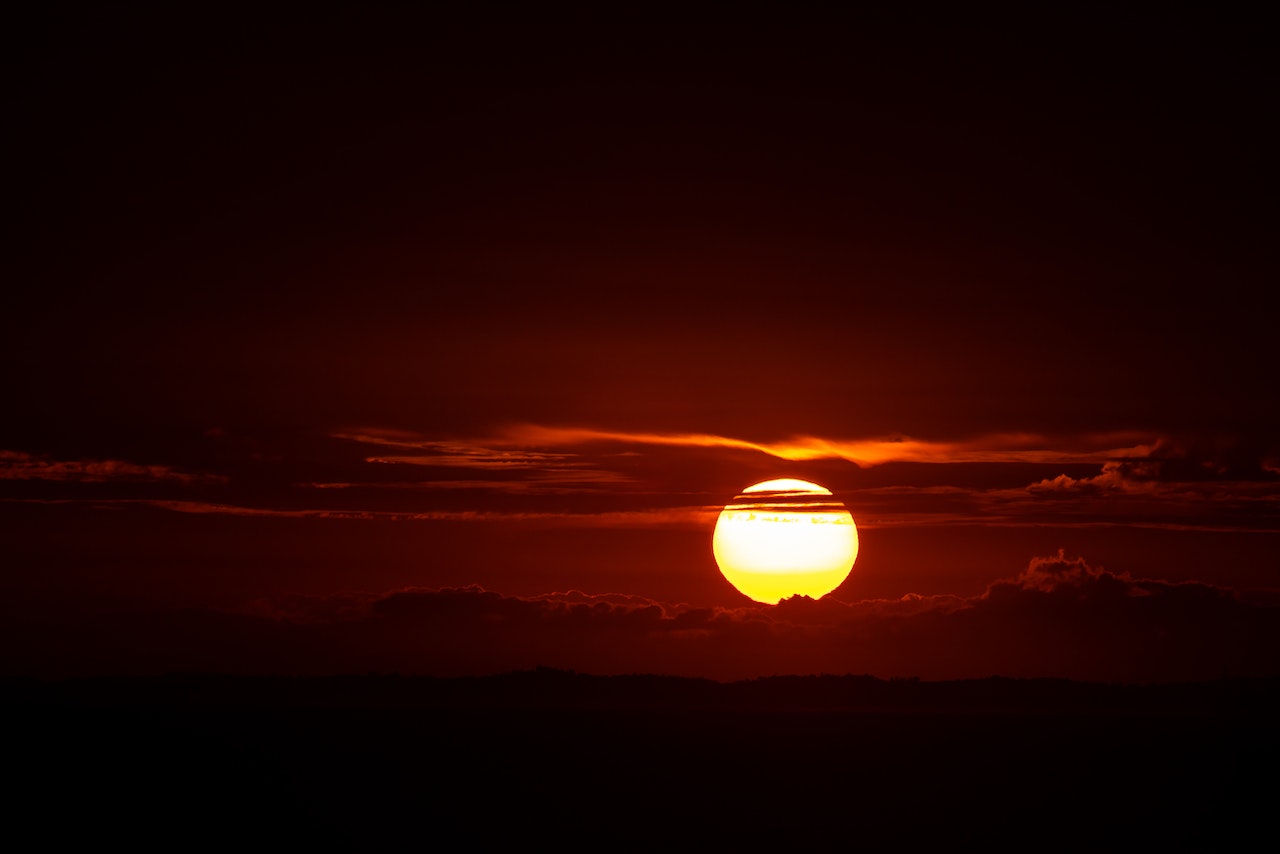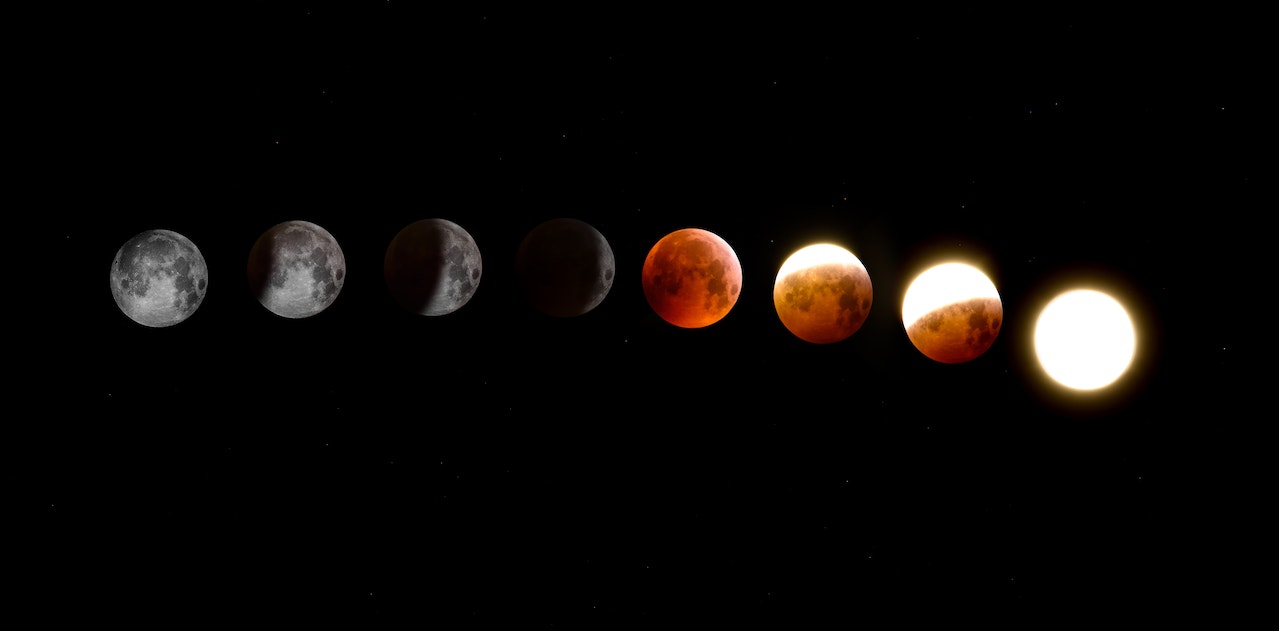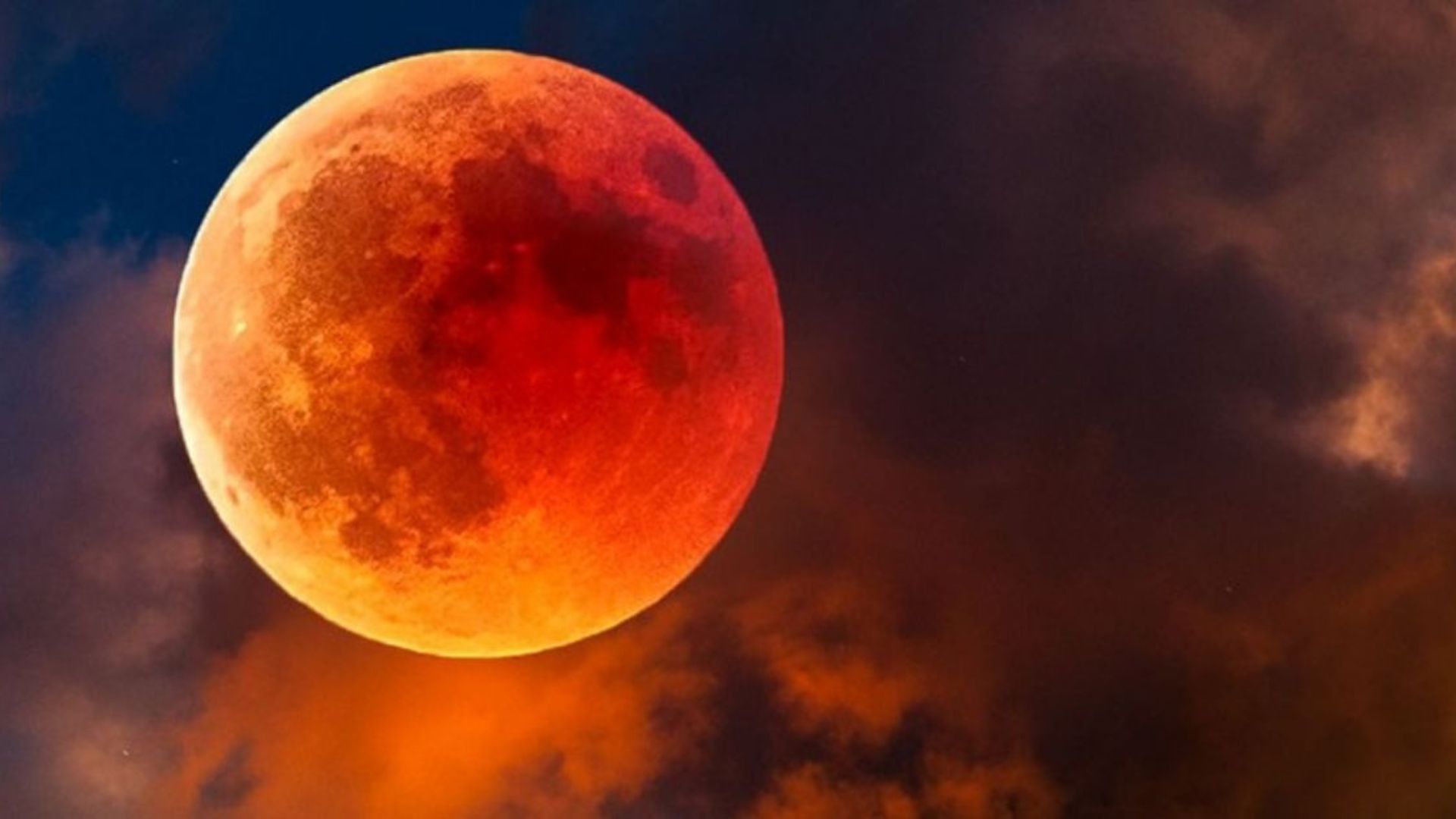Beaver Moon Lunar Eclipse - Witnessing A Celestial Spectacle
Searching for information about the beaver moon lunar eclipse? Learn about the significance, timing, and viewing details of this extraordinary lunar event and its impact on your astrological outlook.
Author:Celeste PearlReviewer:Georgia AshcroftSep 26, 202374.8K Shares1.3M Views

The Beaver Moon is a term used in North America to refer to the full moon in November. It's called the Beaver Moon because it was historically the time of year when beavers built their winter dams in preparation for the coming cold months.
On the other hand, a lunar eclipseoccurs when the Earth passes directly between the sun and the moon, casting a shadow on the moon. This can only happen during a full moon. There are two main types of lunar eclipses: partial and total.
So, a Beaver Moon lunar eclipsewould be a lunar eclipse during the full Moon in November. This is a rare event, as lunar eclipses donot occur every month, and not all coincide with the full Moon in November.
The night sky has always been a canvas of wonders, where celestial events unfold in mesmerizing displays. The beaver moon lunar eclipse is a rare and captivating spectacle. This celestial phenomenon, a convergence of the Beaver Moon and a lunar eclipse, captivates stargazers with its ethereal beauty.
History Of Beaver Moon Lunar Eclipse
The history of the Beaver Moon lunar eclipse is intertwined with human fascination and interpretation of celestial events. Let's embark on a journey through time to uncover the historical significance of this captivating phenomenon:
Ancient Observations
Ancient Mesopotamians, particularly the Babylonians, were among the earliest civilizations known to have recorded observations of lunar eclipses. They meticulously documented celestial events and believed that these occurrences held omens or messages from the gods. Lunar eclipses were often interpreted as significant signs of impending changes in the world.
Chinese Observations (c. 2nd Millennium BCE)
Chinese astronomers, renowned for their meticulous records of celestial events, also documented lunar eclipses. They developed an elaborate system for predicting eclipses, known as the "Shoushi calendar."
Eclipses were regarded as stellar battles between a cosmic dragon and a heavenly dog, prompting the Chinese to engage in ritualistic practices to safeguard against potential harm.
Middle Ages And Renaissance
Islamic scholars in the medieval period made substantial contributions to astronomy. They meticulously recorded lunar eclipses and studied their patterns, significantly advancing knowledge in this field. Observations by astronomers like Ibn al-Shatir and Yunus laid the groundwork for later scientific discoveries.
European Renaissance (14th - 17th Century)
During the European Renaissance, advancements in observational astronomy led to a deeper understanding of lunar eclipses. Pioneering astronomers like Johannes Kepler and Galileo Galilei contributed significantly to our understanding of the mechanics behind eclipses and the movements of celestial bodies.
18th - 19th Century
By the 18th and 19th centuries, scientific journals regularly documented lunar eclipses. Astronomers of this era, armed with increasingly sophisticated instruments, could make precise calculations and observations of lunar eclipses, contributing to a more comprehensive understanding of these events.
Modern Era
The advent of advanced telescopes, satellites, and space exploration in the 20th century revolutionized our ability to study lunar eclipses. Scientists have gathered detailed data on the moon's surface and the Earth's atmosphere during eclipses, providing invaluable insights into the mechanics of these celestial events.
Beaver Moon Spiritual Meaning
The Full Moon in November is often called the Beaver Moon for the hardworking beavers stocking up on food and finishing their lodges in preparation for the coming winter. But beavers continue working even when the river freezes up in the winter. In addition, people used to catch beavers around November to get their luxurious fur. In frigid climates, their greasy, waterproof hair was highly prized.
The Beaver Moon's spiritual significance in November represents the beaver's capacity to shape their destiny. All of us have the potential to become this! Take advantage of the Beaver Moon as your last burst of energy before winter sets in, and do something to improve your life.
As Fall quickly fades into winter, now is the time to wrap up the projects and plans that mean the most to you. To prevent draining or negative energy from affecting your bodily and spiritual well-being, determine what dams you need to build.
What Does The Beaver Moon Mean For Every Zodiac Sign?
The Beaver Moon lunar eclipse holds a special significance for each zodiac sign, as it brings a unique energy that influences various aspects of their lives. Let's explore what this celestial event may signify for each character.
Aries (March 21 - April 19)
The Beaver Moon lunar eclipse may ignite a sense of adventure and boldness in Aries. It could be a time for them to take risks and step out of their comfort zones, especially in personal growth and relationships.
Taurus (April 20 - May 20)
For Taurus, this lunar eclipse may focus on finances and stability. It could be a time to evaluate investments and make strategic money-related decisions.
Gemini (May 21 - June 20)
The eclipse might trigger a desire for deeper connections and meaningful conversations for Geminis. It's an opportunity to strengthen bonds with loved ones and explore the depths of their own emotions.
Cancer (June 21 - July 22)
The lunar eclipse may bring about a sense of closure or transformation in areas related to home and family life for Cancer. It's a time for reflection and necessary changes to create a more nurturing environment.
Leo (July 23 - August 22)
This celestial event could spark creativity and self-expression in Leos. It's a time to embrace and share their unique talents.
Virgo (August 23 - September 22)
The Beaver Moon lunar eclipse may encourage Virgos to focus on self-care and well-being. It's an opportunity to implement positive health routines and seek balance in their daily lives.
Libra (September 23 - October 22)
This eclipse might prompt Libras to evaluate their relationships and partnerships. It's a time for open communication and finding harmony in their connections.
Scorpio (October 23 - November 21)
The lunar eclipse in their sign could bring about powerful transformations for Scorpios. It's a time of introspection, shedding old patterns, and embracing a renewed sense of self.
Sagittarius (November 22 - December 21)
This celestial event may inspire Sagittarians to explore new mental and physical horizons. It's a time for seeking knowledge, travel, and broadening their perspectives.
Capricorn (December 22 - January 19)
The Beaver Moon lunar eclipse might influence Capricorns to focus on their career and ambitions. It's a time for setting goals and taking steps towards achieving long-term success.
Aquarius (January 20 - February 18)
This eclipse may bring about a shift in Aquarius' social circles and communities. It's a time for networking, collaborating, and advocating for causes they believe in.
Pisces (February 19 - March 20)
For Pisceans, the lunar eclipse could heighten their intuition and spiritual awareness. It's a time for introspection, meditation, and connecting with their inner selves.
Remember, astrologyoffers guidance and insights, but individual experiences may vary. It's always beneficial to approach these interpretations with an open mind and use them as a tool for self-reflection and personal growth.
The Phases And Colors Of The Beaver Moon Lunar Eclipse
The Beaver Moon lunar eclipse, a mesmerizing celestial event, unfolds in distinct stages, each marked by a unique interplay of shadows and light. A breathtaking transformation ensues as the Earth, Moon, and Sun perfectly harmonize. Let's delve into the stages and colors that grace this extraordinary phenomenon.
Stages Of A Beaver Moon Lunar Eclipse
Below are the stages of the beaver moon lunar eclipse.
Penumbral Phase
The eclipse begins with the penumbral phase. In this stage, the moon enters the outer shadow of the Earth, known as the penumbra. This phase is subtle and often challenging to discern with the naked eye, as the moon's brightness only slightly diminishes.
Partial Phase
As the eclipse progresses, the moon moves further into Earth's shadow. During the partial phase, a noticeable darkening occurs on a portion of the moon's surface. This phase offers a clear visual distinction between the illuminated and shadowed sections of the moon.
Total Phase
The total phase is the climax of the eclipse. At this point, the moon is entirely engulfed in Earth's umbra, the inner and darker part of the shadow. This is when the moon takes on a stunning copper or reddish hue, often called the "blood moon." The exact color can vary depending on atmospheric conditions.
Reversal
After the total phase, the moon begins its journey out of Earth's shadow. The stages reverse, with the partial step preceding the penumbral phase.
Coloration Of The Beaver Moon Lunar Eclipse
The striking coloration of the moon during a lunar eclipse results from a phenomenon known as Rayleigh scattering. This effect occurs when sunlight passes through Earth's atmosphere, scattering shorter blue and green wavelengths and allowing longer red wavelengths to reach the moon.
Copper Or Red Hue
During the total phase of the eclipse, the moon often takes on a coppery or reddish color. This captivating transformation results from the filtered sunlight bending around Earth and illuminating the moon in shades of red and orange.
Variability
The exact color and intensity of the moon's hue can vary from one eclipse to another. Environmental conditions, including dust and pollutants, can influence the moon's appearance during the eclipse.
Other Hues
While the classic copper or red hue is most common, lunar eclipses can occasionally exhibit color variations, ranging from deep red to orange or even brownish tones, depending on the specific conditions in Earth's atmosphere.
The interplay of these stages and the captivating coloration of the moon during a Beaver Moon lunar eclipse make it a genuinely mesmerizing celestial event, captivating the imaginations of observers worldwide.
Mythology Of The Beaver Moon Lunar Eclipse And Ancient Beliefs
The mythology of the beaver moon lunar eclipse is as follows.
Ancient Beliefs And Interpretations
In ancient Mesopotamia, lunar eclipses were often seen as powerful omens. They believed that these celestial events carried significant messages from the gods. Eclipses, including the Beaver Moon lunar eclipse, were interpreted as signs of impending change, often viewed through a lens of both awe and trepidation.
Chinese Dragons And Divine Battles
Chinese mythology, rich in symbolism, associates lunar eclipses with cosmic battles between a celestial dragon and a heavenly dog. The dragon, representing the moon, was believed to be threatened by these angelic forces. The Chinese used ritualistic practices and ceremonies during eclipses to protect the moon.
Native American Tribes And Animal Spirits
Among certain Native American tribes, including the Algonquin people, the November full moon was known as the Beaver Moon. This designation was rooted in practicality, marking the time to set beaver traps before the waters froze. The Beaver Moon held cultural significance as a period of preparation and resourcefulness.
Lunar Eclipse And Transformation:
For many Native American tribes, a lunar eclipse, especially during the Beaver Moon, was viewed as a powerful transformative event. It symbolized a time of change, reflection, and renewal. Some tribes believed that during an eclipse, the moon temporarily left its place in the sky to embark on a journey of self-discovery and transformation.
Hindu Deities And Eclipse Mythology
In Hindu mythology, lunar eclipses are attributed to the mythical Rahu and Ketu. According to the legend, Rahu and Ketu were celestial demons who disguised themselves to partake in the elixir of immortality.
When discovered by the gods, the Sun god, Surya, and the Moon god, Chandra, alerted Lord Vishnu, who severed their heads. However, due to the elixir's influence, they became immortal. Rahu is associated with solar eclipses, while Ketu is linked to lunar eclipses.
Eclipse As A Period Of Influence
Hindu beliefs suggest that during a lunar eclipse, the influence of Rahu and Ketu is at its peak. It's considered an auspicious time for introspection, meditation, and spiritual practices. Many Hindus fast and engage in prayers during eclipses to seek protection and blessings.
Norse Legends And Celestial Wolves
Norse mythology tells of Sköll and Hati, two wolves who pursued the sun and the moon across the sky. It was prophesied that during Ragnarök, the end of the world, they would catch their celestial prey, resulting in a solar and lunar eclipse.
Eclipse As A Symbol Of Cosmic Events
For the Norse, a lunar eclipse was seen as a cosmic event, a temporary victory for the celestial wolves. It served as a reminder of the cyclical nature of existence, the inevitability of change, and the interconnectedness of all things in the cosmos.
Beaver Moon Lunar Eclipse FAQs
How Does The Beaver Blood Moon Affect Humans?
According to astrologers, Tuesday's Beaver Blood Moon and eclipse may have a relationship-ending influence and cause generalized financial instability. The uncommon moon, which won't be seen again until 2025, concludes the eclipse season and, in the words of an intuitive astrologer, "brings emotions to the forefront."
What Is Unique About The Beaver Moon?
Winter was when beaver pelts were at their thickest, and trappers were compensated according to the weight of the hides. Consequently, since trappers had yet to face much snow, November became essential for beaver hunting. This is conceivable how the full Moon in November got its moniker.
Is There Another Name For The Beaver Moon Eclipse?
A Beaver Moon is any full moon that occurs in November. This is because it falls in the year when beavers hibernate. This information explains why this specific lunar phenomenon is known as a "Beaver Blood Moon Eclipse."
Why Is The Blood Moon Red?
The Earth blocks direct sunlight; thus, the only light that reaches it is sunlight that has been bent by the atmosphere of Earth, giving it a reddish hue.
What Does A Full Moon Lunar Eclipse Mean In Astrology?
Lunar eclipses cause ultimate ends, which makes them more dramatic. They often cause us to feel emotional and mindful of the passing of time. A lunar eclipse on a full moon is nearly usually an emotional event. Dreamsand memories resurface, and we sometimes experience sentimentality.
Conclusion
The Beaver Moon lunar eclipse, a convergence of celestial events, casts a spell on those fortunate enough to witness its enchanting display. This captivating phenomenon, uniting the sacred Beaver Moon with the celestial ballet of a lunar eclipse, reveals the intricate mechanics of our solar system. At its heart lies the mystical wand of gravitational forces orchestrating this cosmic dance.
Across cultures, this event holds profound significance, reminding us of our deep connection to the cosmos. As we stand beneath the bejeweled tapestry of the night sky, the Beaver Moon lunar eclipse is a timeless reminder of the boundless wonders that unfold above us.
Jump to
History Of Beaver Moon Lunar Eclipse
Beaver Moon Spiritual Meaning
What Does The Beaver Moon Mean For Every Zodiac Sign?
The Phases And Colors Of The Beaver Moon Lunar Eclipse
Coloration Of The Beaver Moon Lunar Eclipse
Mythology Of The Beaver Moon Lunar Eclipse And Ancient Beliefs
Beaver Moon Lunar Eclipse FAQs
Conclusion

Celeste Pearl
Author
Celeste Pearl is an accomplished writer and expert in numerology, astrology, and spirituality.
With a Bachelor of Arts in Journalism and over 6 years of writing experience, Celeste brings a wealth of expertise to her articles, making complex topics accessible and engaging for readers.
Her passion for metaphysical sciences is evident in her insightful content, where she explores the depths of these subjects with clarity and depth.
Beyond her professional pursuits, Celeste enjoys delving into spiritual practices and connecting with nature for inspiration.

Georgia Ashcroft
Reviewer
Georgia Ashcroft is a seasoned astrologer and spiritual practitioner with over 5 years of experience. She holds a Master's degree in Physics from Princeton University, enriching her astrological insights with a deep understanding of scientific principles.
Georgia's published works encompass insightful analyses of astrological phenomena, including zodiac signs and horoscope interpretations, establishing her as an esteemed figure in astrological circles.
Beyond astrology, Georgia is passionate about tarot and regularly incorporates its wisdom into her spiritual practice.
Latest Articles
Popular Articles



